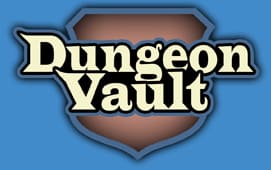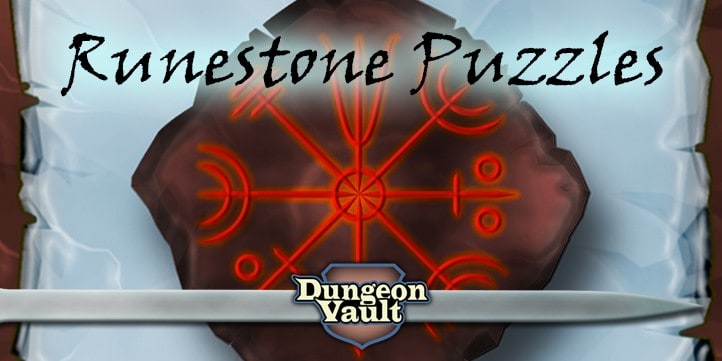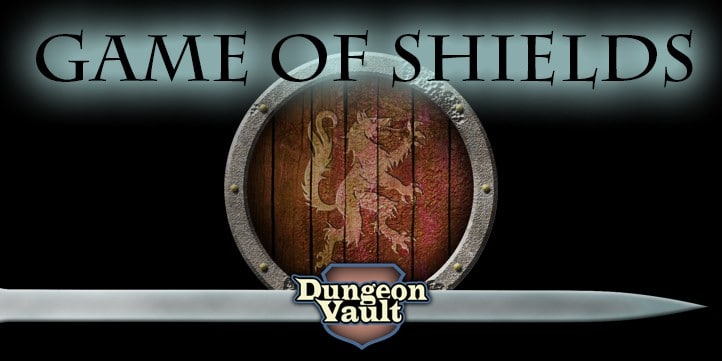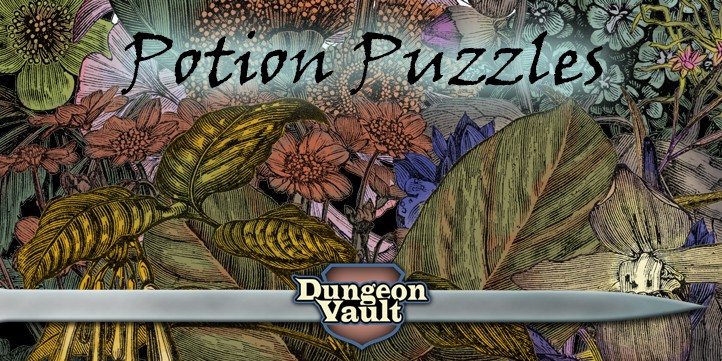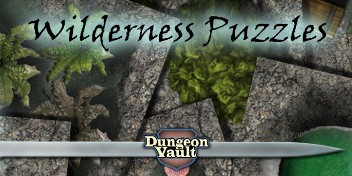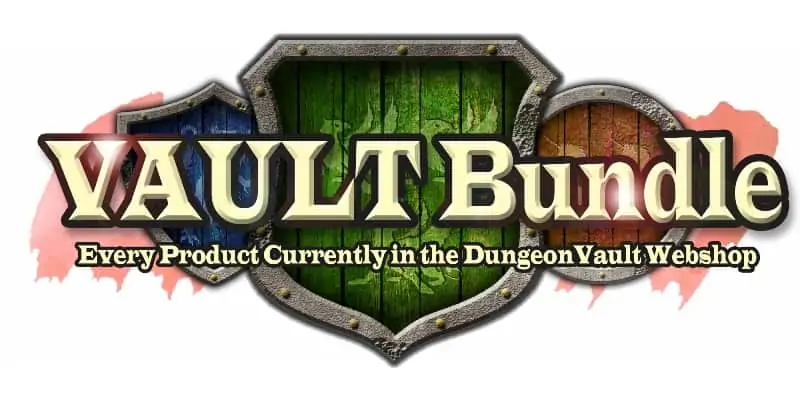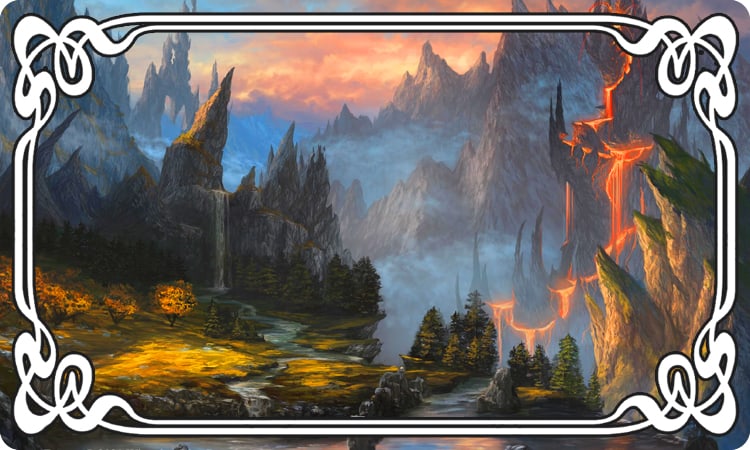
D&D Puzzles as Rule Systems for building your campaign world.
When using puzzles in Dungeons & Dragons you can either go small or go big. Most Dungeon masters go small. Meaning, they only use puzzles to lock doors or treasure chests. And that’s a shame, because they are missing out on the grand opportunities that come with using puzzles in a much bigger way.
If you go big you are using puzzles to span your entire campaign world. Big puzzle designs might represent rule systems for the economy, history, sieges, politics, magic item creation and so on.
This way, D&D puzzles can add depth and structure to your campaign in a way small puzzles you place on objects never could. You can even use several layers of puzzles to give the campaigns you build a unique feel.
So how does that work?
D&D Puzzles as Stand Alone Rule Systems
Imagine that the creators of D&D wanted to add a new and optional rule system for doing politics. It would have to fit seamlessly with the existing rules and add a layer of depth to your campaign world.
Now imagine they also developed an advanced stand alone system for magic item creation adding another layer of depth and structure to your campaign. And your players would certainly have a unique experience.
Puzzles that go big, also have their own stand alone rule systems which can do double duty as systems for politics or magic item creation, and so on. Using puzzles in this big way is very much under-utilized. And yet, it offer unique gaming benefits. To name a few:
- Big puzzles are built right into the bones of your campaign world increasing immersion. They make sense to the players.
- World-building with puzzles means the players will encounter the same type of puzzle more than once. So their skill can increase and you only have to explain the rules once.
- Adding a rule system for things like politics or magic item creation is never just about creating a realistic simulation. Any rule system should also provide gaming challenges and by using puzzles the challenge is baked right into the system.
- The added structure helps you pace the campaign better. This one might not be obvious now but I’ll illustrate it later in the article.
There’s a lot of benefits to going big, but if it all sounds a little vague, here are some examples.
Creating a Sense of History and Lore through D&D Puzzles
Every campaign world needs to have a unique look and feel for the players to explore. A quick way many DMs create a sense of history is by adding a couple of ages that each have their own events, culture, and powers. So if your players enter a temple it might be built on the ruins of another building from another age and so on.
Layering ages gives your campaign world a lived in feeling. Pretty standard stuff so far and most DMs do this already. But unless there is something from those lost ages for players to explore it can feel flat. All that history and lore needs to have a gaming function in your world.
One way to add depth is by using Runestone Puzzles. It’s a puzzle system I created which allows you to create an infinite amount of puzzles of every difficulty level. For instance, these magical runestones could be forged in the first age, warred over in the second age, and have their meaning mostly forgotten in the third age.

Now the players might unlock their powers once more by solving a series of increasingly difficult puzzles carefully sprinkled throughout your campaign. Maybe one PC received a runestone from her last remaining relative. A family secret that must be kept safe. And then they find a puzzle in a ruin. Next, they encounter a villain looking for the power behind the runestones. With the puzzle already a part of your campaign world, these stories write themselves.
That takes care of the history, but what about the lore?
This puzzle pack draws on real life influences from the Vegvisir which is described in the Huld manuscript; a historic islandic collection of spells.
It also reflects Buddhist teaching described in the ‘ Noble Eightfolded Path’ as a spiritual practice towards enlightenment. And the ‘Yant Paed Tidt’ is a sacred Thai Buddhist tattoo said to grand powers to its wearer. Taoism uses a symbol with eight directions called the ‘Eight Trigram Furnace’.
Cultural symbolism from real life has often evolved over centuries to match our collective subconscious. It adds the kind of depth players can’t quite lay their finger on, but they can feel it’s there. When drawing form real life, always be respectful to the original symbolism and belief systems.
By using runestone puzzles in this way, the history and lore becomes relevant to the players’ decision making. And you gain a system for pacing the story. Questions players have about the runes draw players further into your world. And puzzle challenges found around the world help you pace the story. You decide when and where the next runestone is found and what powers it holds.
The Role of Puzzles in Creating a Believable Political System
Another way to go big with D&D puzzles is by using them for politics.
I mentioned using a puzzle system as a rule system for running politics in your game before. But creating a believable stand alone system for running politics in D&D is hard under the best of circumstances. Here’s why:
- First, there are so many factions and possible interactions to keep track off that players soon start to forget names and events.
- Second, politics offer their own kind of power which you don’t want players to have too much of too soon. That’s like giving level one players too powerful magical items.
- A third problem with politics is that players can start to feel like spectators. Politicking is fine, but it must always lead to action. Help out an ally, bride a faction, blackmail the competition, or even assassinate a king. Each of these political moves can be action-packed adventures.
The Game of Shields is a system for political puzzles that takes care of all these problems. For a deep dive you can read the basic rules here. You can find the complete version in my webshop here.
Puzzles as a Means of Adding a Unique Magic Item Creation System
Dungeons and Dragons has a rules system for creating magical items. It’s quick and basic, which is great if you just want to get that out of the way. But it does nothing for drawing your players further into the story.
Creating a magical item is a big deal. So instead of glossing over it, you can have it take centre stage in your campaign world using a puzzle system. Here’s how:
Potion puzzles is a complete system for creating magic items of all kinds. From magic sword, to flying carpets. You name it.
To create an item players must find all the rules to the magical formula which you can hide in wizard colleges, priests’ secret chamber, as a reward from a patron, through divination, and so on.
I usually sprinkle these throughout whatever adventure the players are on. And players can get obsessed with finding all the rules to a formula if they really want something.
If they manage to find the complete formula, they need to find the plants to mix the potion. Low level magical plants can be found growing in any forest grove. But high level plants may only grow on clouds once a month, or deep in enemy territory.
Once players have both the formula and the plants they must solve the puzzle to how to prepare and use them in a cauldron. If they are successful they manage to brew a potion, ink, dye or polish that is the key ingredient to creating a magic item.
By using puzzles for item creation you can send players on many little action-packed quests without taking away from the overall story. And the process of creation is an exciting puzzle for which they put in a lot of effort. Gaining a flaming sword this way is much more meaningful than finding it somewhere in a dungeon.
Using Puzzles as a Wilderness Travel System
Another way of incorporating puzzles in a big way is wilderness travel. Some Dungeon masters want to make travelling more of a challenge, while others just want to skip it and get to where players want to go. I have solutions to make both options exciting.
DMs who wish to focus on travelling often use a wandering monster chart and weather conditions as their rule system. But wilderness travel can also be about finding your path and getting lost along the way. Sure, you can throw in some wandering monsters and blizzards, but that’s just gravy. If you want to combine puzzles with travelling I recommend both Wilderness Puzzles and Potion Puzzles. And I’ve written a separate article about how to use puzzles for travelling.
DMs who want to skip the travelling altogether can use magical portals. PCs can hop between locations quickly that way. You can lock each of these portal with a quick puzzle. Again I wrote a whole article about how to lay out puzzles for this type of travel and which ones to use.
All the puzzles I mentioned and many more can be found in the VAULT bundle. It contains every product currently in the webstore at a massive discount giving you even more options for building your campaign. So be sure to check it out.
By Paul Camp
Image credit: Magic the Gathering
